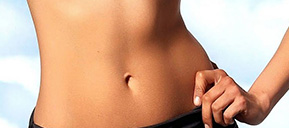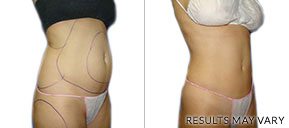One of the most common questions we get about liposuction is how soon patients can return to their normal activities.
Types of Liposuction and How They Affect Recovery
The first thing you should know about liposuction recovery is that not all lipo procedures are the same – therefore, not all recovery is going to be the same. The biggest factor that is going to affect how long recovery takes is how invasive your procedure is.
“Traditional” liposuction procedures are done with large cannulas, which are considered more invasive. These larger cannulas can quickly suction fat, but they result in more tissue damage and blood loss in the surgical area, which can extend recovery time. Return-to-work for this type of procedure can be over a week – return to exercise can sometimes be over a month.
Here at Houston Lipo Center, we only perform minimally invasive liposuction using small “micro-cannulas” that take longer but allow for a gentler procedure and quicker recovery time. We use these cannulas in combination with tumescent liposuction using only local anesthetic.
Tumescent liposuction pumps saline solution into the liposuction area and expands the fat layer, allowing for more precise sculpting and reducing bleeding and tissue damage. The tumescent fluid also contains epinephrine, which constricts blood vessels, further reducing bleeding and improving recovery time. So, understand that when we talk about recovery times in this article, we’re talking specifically about the way we do the procedure here – minimally invasive liposuction using the tumescent method.
Return to Work After Liposuction
Generally, patients are advised to take off two days – the day of their surgery and the day after. You can return to work the day after that. However, you may be able to return to work even sooner, or you may need to take longer. How soon you can return to your normal work depends on both type of work you do and the size of your liposuction case.
A large case, for example, a patient who has had upper abdomen, lower abdomen, and waist/hips, will need that standard day after surgery to recover before returning to work. A smaller case like the chin may be able to return to work directly after the surgery – and we’ve had patients who have done so (of course, if you don’t want to wear the chin compression garment to work, that’s understandable).
If you work in an environment where you need to do heavy lifting or intense exercise on a regular basis (for example, a construction job, childcare center, or personal trainer), you may need to extend your time off.
In all cases, your surgeon will discuss recovery and return-to-work times with you based on your job requirements prior to scheduling your surgery.
Return to Low Impact Exercise
You can return to low impact exercise immediately after your procedure, and in fact, light exercise after liposuction will be beneficial as it reduces the likelihood of blood clots and promotes healing.
Low impact exercise is anything that does not include running or jumping. For example, you can walk, get on the elliptical machine, do sit-ups, bodyweight squats, and even work out with light weights.
You shouldn’t engage in anything too strenuous. Don’t begin a powerlifting class in the two weeks after your procedure. Your body is still recovering and pushing it too much can result in overexertion.
Even though swimming is generally considered low-impact, it’s not recommended immediately after liposuction. It’s very important to make sure that your incisions are completely healed prior to getting in the pool. If swimming is an important part of your exercise routine, discuss this with your surgeon prior to scheduling your procedure.
Return to High-Impact Exercise
After two weeks, you should be able to return to all your normal high-impact exercises like running and jumping. Take it easy as you return to more intense exercises, and allow your body to re-adjust to these types of activities. You will continue to see your liposuction results improve over the next month. Making sure that you incorporate exercise into your routine is one of the best ways to maintain your post-lipo weight and can even improve on your results.



